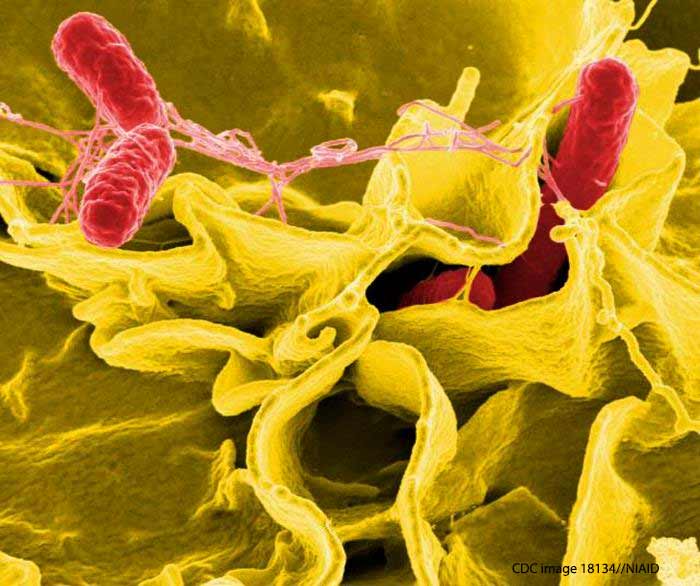Salmonella 1,4,5,12:b are bacteria that can contaminate food and make you sick. Most species of this bacteria can transmit illnesses from human to human and from food to human. S. 1,4,5,12:b is not like that. It transmits illness only from food to human. That means that an outbreak of these infections is always caused by a contaminated food product, either one purchased at a grocery store or eaten at a restaurant.

Our lawyers and the Minnesota Department of Health are investigating a cluster of illnesses involving S. 1,4,5,12:b. Our lawyers have won millions for people sickened by tainted food. We have helped babies, children and adults get compensation and hold corporations accountable.
Salmonella 1,4,5,12:b causes especially severe illnesses that can last 3 to 4 weeks if not treated with antibiotics. The problem is that this species is often antibiotic resistant, making it difficult to treat.

Why is it called Salmonella 1,4,5,12:b?
There are thousands of serotypes of Salmonella bacteria, each a little (or a lot) different. S. 1,4,5,12:b is similar to the type that causes typhoid fever, which accounts for its being particularly dangerous.
Scientists use a classification system to identify different strains. In scientific classification, Salmonella is the genus. The species are names like paratyphi B and java, which are the specific species that have the 1,4,5,12:b serotype. A serotype is a group within a species, for example S. paratyphi B 1,4,5,12:b:1,2. These numbers tell scientists specific information about the bacterium. The first part (1,4,5,12) is a number describing the O antigens (involves the chemical structure of the outermost portion of the bacteria’s surface covering). The second part (b:1,2) designates the H antigens (involving the protein content of the flagella, the long “strings” that flow behind each cell).
What Happens When Tainted Food is Eaten?
When food contaminated with S. 1,4,5,12:b is eaten, the bacterium colonize (multiply) in the intestines. It takes about 7 – 14 days after eating the food for the person who ate the food to start getting sick with diarrhea, really bad abdominal cramps and a fever.
During the 7-10 day incubation period and afterwards, the bacteria can cause a lot of damage. The cells can penetrate the intestinal mucosa, then be transferred, via the lymph nodes and the blood, to other parts of the body, including the liver, kidneys, spleen or brain. The bacteria can cause wrongful death.
Free Consultation about a Lawsuit for Compensation
If you, your child or your spouse has been diagnosed, you can request a FREE case evaluation (click here now) with one of our lawyers. We are not just advertising for these cases, we handle these cases and have won millions victims and their families. Find out if you can sue a restaurant, food company or another business for compensation:
- medical expenses
- lost wages for time off of work or losing a job
- pain and suffering.
For more information, please see the following:
- Salmonella Lawsuit: 5 Reasons to Sue Now
- Can I Sue a Restaurant for Food Poisoning?
- Can I Sue a Grocery Store for Food Poisoning?
Sources: 1. http://genome.wustl.edu/genomes/detail/salmonella-enterica-serovar-paratyphi-b/
2. http://www.cdc.gov/salmonella/reportspubs/salmonella-atlas/serotyping-importance.html.